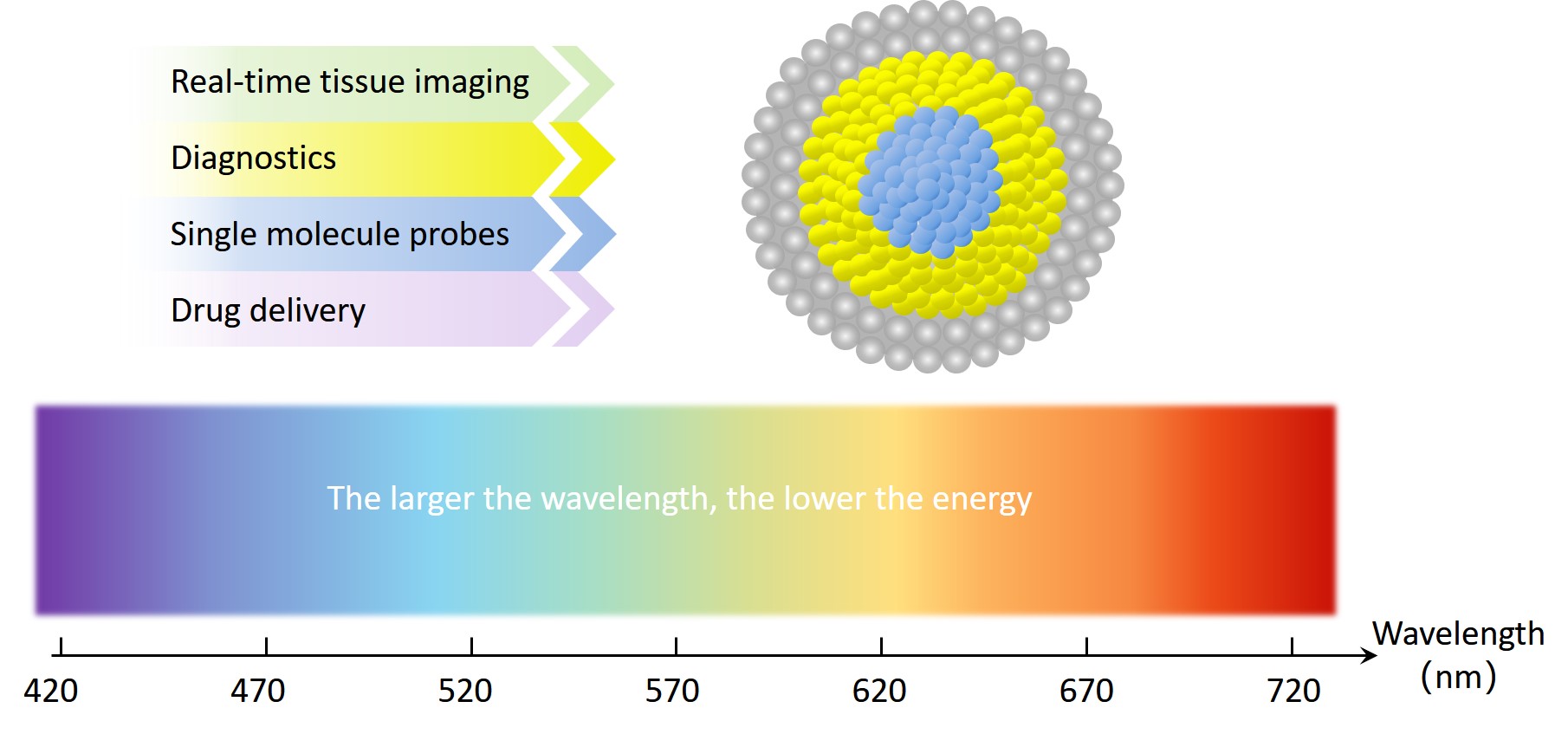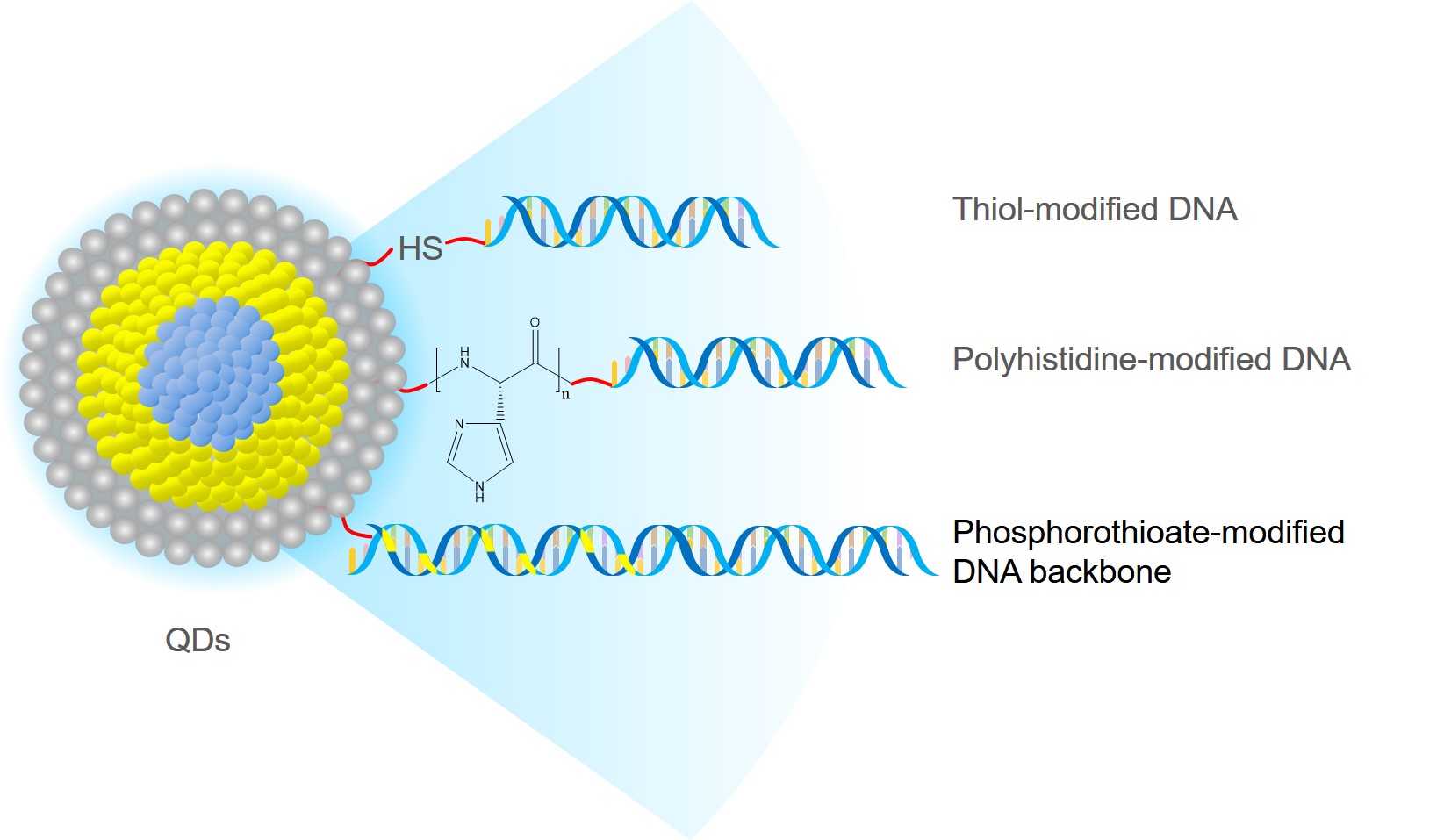Quantum Dot Annotation
Creative Biolabs is the global leading supplier of nano-targeting reagents and materials, providing quantum dot series products and bioconjugation services on the surface of quantum dots.
Quantum Dots (QDs)
Quantum dots (QDs) are semiconductor nanoparticles that bind excitons in three spatial directions, with diameters between 1 and 100 nm, and can receive excitation light to generate fluorescence. QDs have the characteristics of high fluorescence intensity, long fluorescence lifetime, strong resistance to photobleaching, high photostability, biocompatibility, easy modification, and have a wide range of applications in drug modification, affinity ligands, and imaging.
Among various QDs, silicon QDs have the best biocompatibility. The biggest benefit of QDs is the abundance of colors. The complexity of biological systems often requires the simultaneous observation of several components. If dyed with classical dye molecules, different wavelengths of light are required for excitation, while QDs do not have this problem. Due to the size-dependent fluorescence emission of QDs, QDs of different sizes (corresponding to different emission spectra) can be used to label different biomolecules. Using a single light source enables QDs of different colors to be monitored instantaneously. In addition, QDs can be used to make long-term observations of labeled objects, which also provides a powerful tool for studying long-term interactions between biomolecules in cells. In general, covalent QDs have better photostability than ionic QDs. The special optical properties of QDs make them have great application prospects in biochemistry, molecular biology, cell biology, genomics, proteomics, drug screening, and biological macromolecular interactions.
 Fig.1 Schematic illustration of QDs in biomedical applications.
Fig.1 Schematic illustration of QDs in biomedical applications.
Bioconjugation of QDs
Without changing the chemical properties of QDs, QDs can be combined with specific antibodies or small molecules and can emit fluorescence of a specific wavelength after being excited by a light source to realize target recognition and detection. The bioconjugation between QDs and biological macromolecules, such as nucleic acids, proteins, enzymes, carbohydrates, and lipids, is usually performed by the following methods: electrostatic attraction, conventional cross-linking agent connection, or biotin-avidin.
- Electrostatic attraction method: Since the surface of thioglycolic acid-modified QDs is negatively charged, the QDs and positively charged protein surface regions can be connected by electrostatic attraction without the need for other reagents. For neutrally charged proteins, a positively charged structure can be constructed at the end of the protein by engineering the protein, so that it can be electrostatically adsorbed on the surface of QDs. In addition to the above-mentioned direct electrostatic attraction of target molecules, avidin can also be attached by electrostatic adsorption, and then QDs can be indirectly linked to protein molecules using the highly specific conjugating of biotin-avidin. This connection reduces the surface defects of the QDs and increases the fluorescence intensity of the QDs.
- Conventional cross-linking agent connection method: The modified -COOH on QDs can be conjugated with the -NH2 of small molecules through condensation by using cross-linking agents. The EDC/NHS cross-linking method has been used to conjugate 1,3-Diamino-2-propanol (C3H10N2O) to carboxylated QDs for hydroxylation. This conjugation method reduces the size of QDs, increases their fluorescence intensity and stability in acidic or basic environments, and greatly reduces the non-specific binding of QDs to cell membranes or proteins. The QDs modified by ligand exchange can be attached to fibroblasts by EDC/NHS method, and the QDs can penetrate the cell membrane and reach the nucleus.
- Biotin-avidin method: QDs can be combined with biomolecules through the biotin-avidin system for antigen-antibody mutual recognition, in vivo labeling, and specific labeling. This QDs probe has high sensitivity and strong fluorescence signals.
 Fig.2 Conjugation of DNA to the shell of QD.
Fig.2 Conjugation of DNA to the shell of QD.
Creative Biolabs can provide services for modifying biomolecules such as drugs, functional molecules, antibodies, carbohydrates, and lipids on the surface of QDs. Please feel free to contact us to further discuss your QDs solution, our professional team of scientists will continue to follow up on your project.
